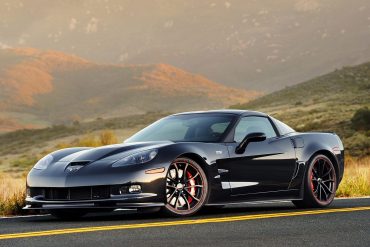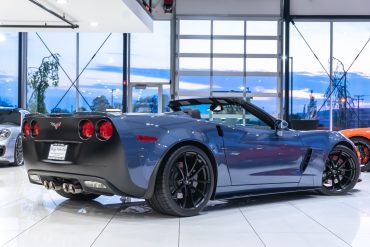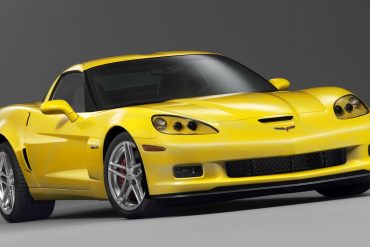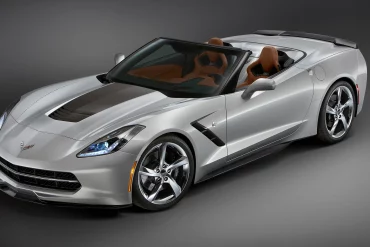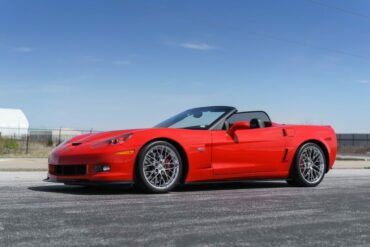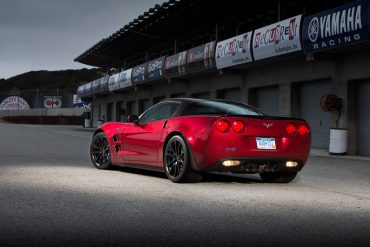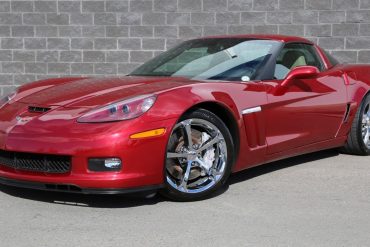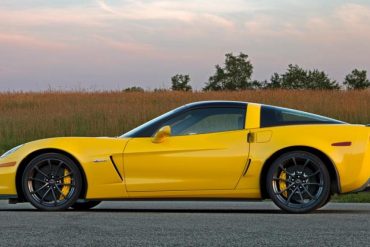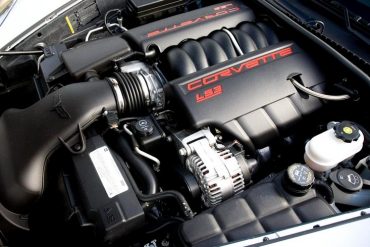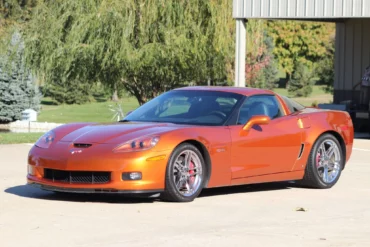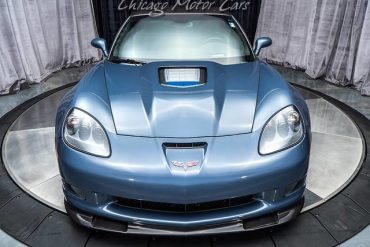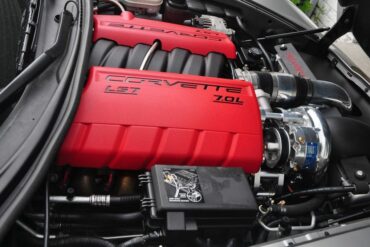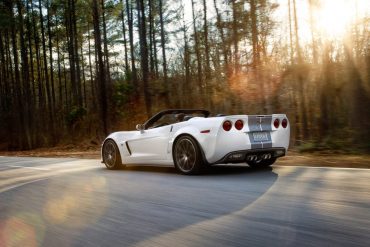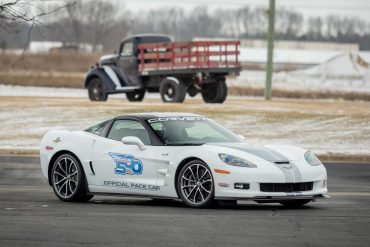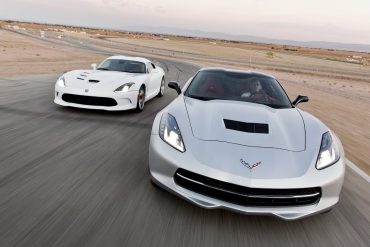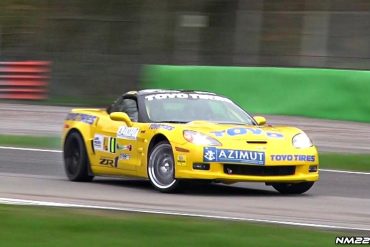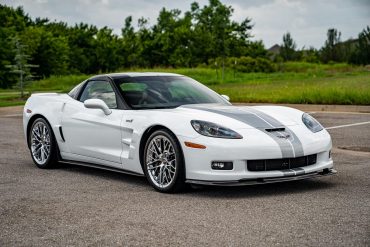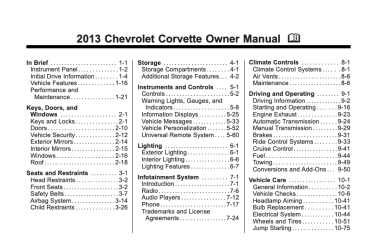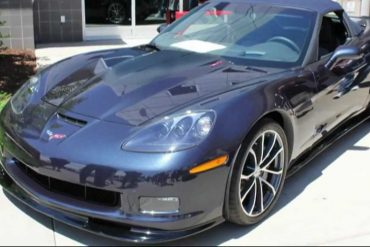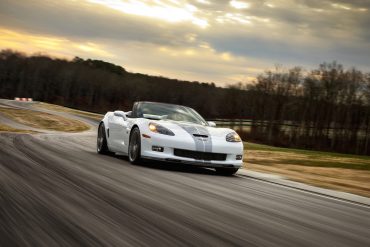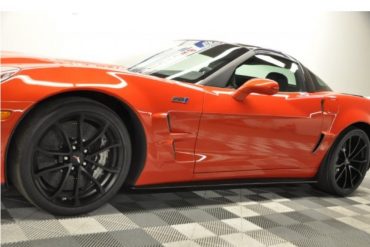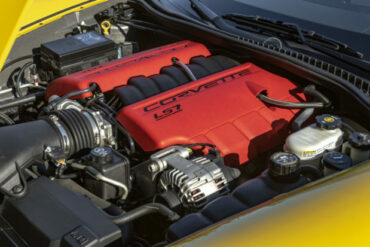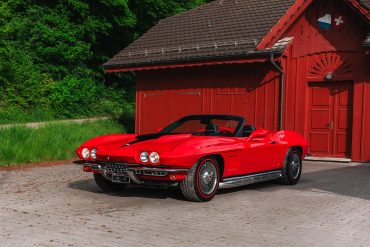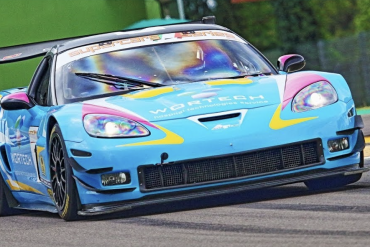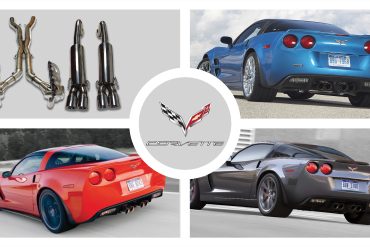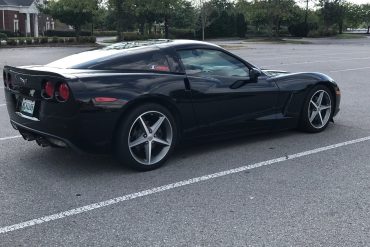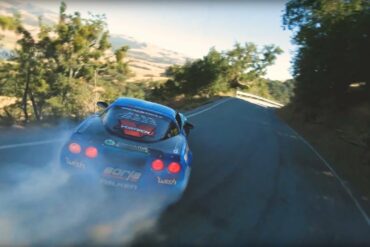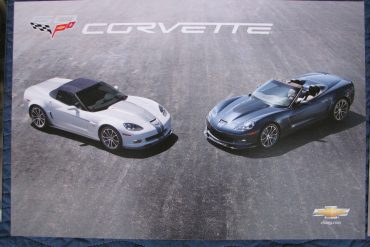C6 Corvette Car Covers Designer Mat Black/Silver Two Tone C6 Embroidered Logo Car Cover This two tone car covers comes...
Supersonic Blue 2013 Chevrolet Corvette We found some examples of 2013 Corvette in the Supersonic Blue color scheme. These real Supersonic Blue paint...
The Z06 arrived for the 2006 model year as a homologation vehicle in the third quarter of 2005 and is the lightest of all Corvette models. The Z06 was equipped with the largest-displacement small-block engine ever produced, a new 7,011 cc (7.0 L; 427.8 cu in) V8 engine codenamed the LS7. The engine has a power output of 505 hp and 470 lb⋅ft.
Chevyt presented a trio of Corvette Stingray concepts. Many of the items fitted to the cars are available through the Chevrolet Accessories and Chevrolet Performance catalogs. Designed with cruising in mind, the Stingray Atlantic convertible concept features stunning Blade Silver paint, while the Stingray Pacific concept is more race-inspired and the Stingray Gran Tourismo was created to commemorate the 15th anniversary of the Gran Tourismo video game.
In terms of what is new, Black is back as well as the new color we told you about which is officially called “Night Race Blue Metallic”. The other major 2013 additions which have already been seen are the 427 Convertible and the 60th Anniversary Package.
2013 C6 Corvette ZR1 Pictures & Images ...
Torch Red 2013 Chevrolet Corvette We found some examples of 2013 Corvette in the Torch Red color scheme. These real Torch Red...
Below are the VIN ranges for the 2013 Corvette cars:
2013 C6 Corvette Pictures & Images Check out these great 2013 Corvette images. The exterior of the 2013 sixth generation...
Upon the LS3’s release in 2007, this trend toward continual technological advancement was clearly evident. As the new power plant for the standard 2008 Corvette, the LS3 provided consumers with exactly what they had been craving, unsurpassed performance. With every reiteration, the LS small-block has become more powerful, efficient, and robust.
Two beautiful, low-mileage Corvettes are being offered at Bring A Trailer, a 2008 Chevrolet Corvette Z06 and a 2013 Chevrolet...
An Insanely Cool Sixth-Gen ZR1 Corvette Priced To Sell! When it was first introduced just a few, short years ago,...
GM’s was on mission to engineer a Corvette that built upon the line’s performance legacy. By all indications, this is a mission that was fulfilled. The Corvette’s engine bay was host to several outstanding powerplants during the C6’s run. From the base 6.0-liter LS2 to the ZR1’s beastly 6.2-liter LS9, the C6-era was never short on performance. Corvette finally caught up to European brands.
The 2013 Corvette 427 Convertible served double-duty as a commemorative edition model. While it marked the departure of the sixth-generation Corvette. The real selling-point was the powerplant at the heart of the car - a 427-cubic-inch (7.0L) LS7 engine, the same engine used in the C6 Corvette Z06. Rated at 505 horsepower (377kW) and 470lb.-ft of torque (637 Nm), this 427 was the most powerful engine GM had ever installed in a production Corvette convertible to date.
In 2012, the 2013 Corvette ZR1 was announced as the official pace car for the Indy 500 event, making it...
Edmunds compares the 2014 Chevy Corvette Stingray against a 2013 Dodge SRT Viper. It’s worth noting that the Viper holds...
A ZR1 Corvette was filmed doing a lot of drifting at the Monza Rally Show 201. Take note that it...
See the complete technical specifications and performance information for the 2013 Chevrolet Corvette, including engine specs, acceleration, & quarter mile.
This Owners Guide contains important information regarding the operation and maintenance of your 2013 Corvette. In order to obtain maximum enjoyment and usage from your car, we suggest that you familiarize yourself with the contents...
Black 2013 Chevrolet Corvette We found some examples of 2013 Corvette in the Black color scheme. These real Black paint pictures of real 2013 Chevy...
Night Race Blue 2013 Chevrolet Corvette We found some examples of 2013 Corvette in the Night Race Blue color scheme. These real...
2013 Corvette – The Ultimate Guide The arrival of the 2013 Chevrolet Corvette was greeted with a lot of grandeur...
Inferno Orange 2013 Chevrolet Corvette We found some examples of 2013 Corvette in the Inferno Orange color scheme. These real Inferno Orange paint...
In the midst of the Z06’s development, engineers knew that something truly remarkable would be needed to best the base Corvette’s 400 horsepower LS2. In its production form, this new small-block V8 came to be known as the LS7. The LS7 was nothing short of all-powerful, featuring a displacement of 427 cubic inches and an output of 505 horsepower.
While the classic Chevrolet Corvette is admired for its styling and heritage, newer models offer far better comfort and safety....
During the summer of 2005, a decision was made to transform selected Z06 road cars into a new breed of racer to compete in the world's top GT3 championships. The first series to introduce this new GT3 class was the SRO and FIA's GT3 Championship. Based on their racetrack test results, Team Carsport saw instant potential in the car. Hezemans contracted Callaway Competition in conjunction with Koos Pettinga, manager at Corvette Europe, to convert the street Z06 into a Z06R GT3.
These are the best exhausts for 2005-2013 C6 Corvettes. The installation of a custom exhaust provides a great way to...
Does Corvette Ownership Live Up to the Hype? I had my first opportunity to drive a Corvette when I was...
Matt Field is a renowned for his superb drifting on the racetrack, but this time he shows his skills on...
2013 Corvette Ads 2013 Corvette TV Commercials No Subscription? You’re missing out Get immediate ad-free access to all our premium...


